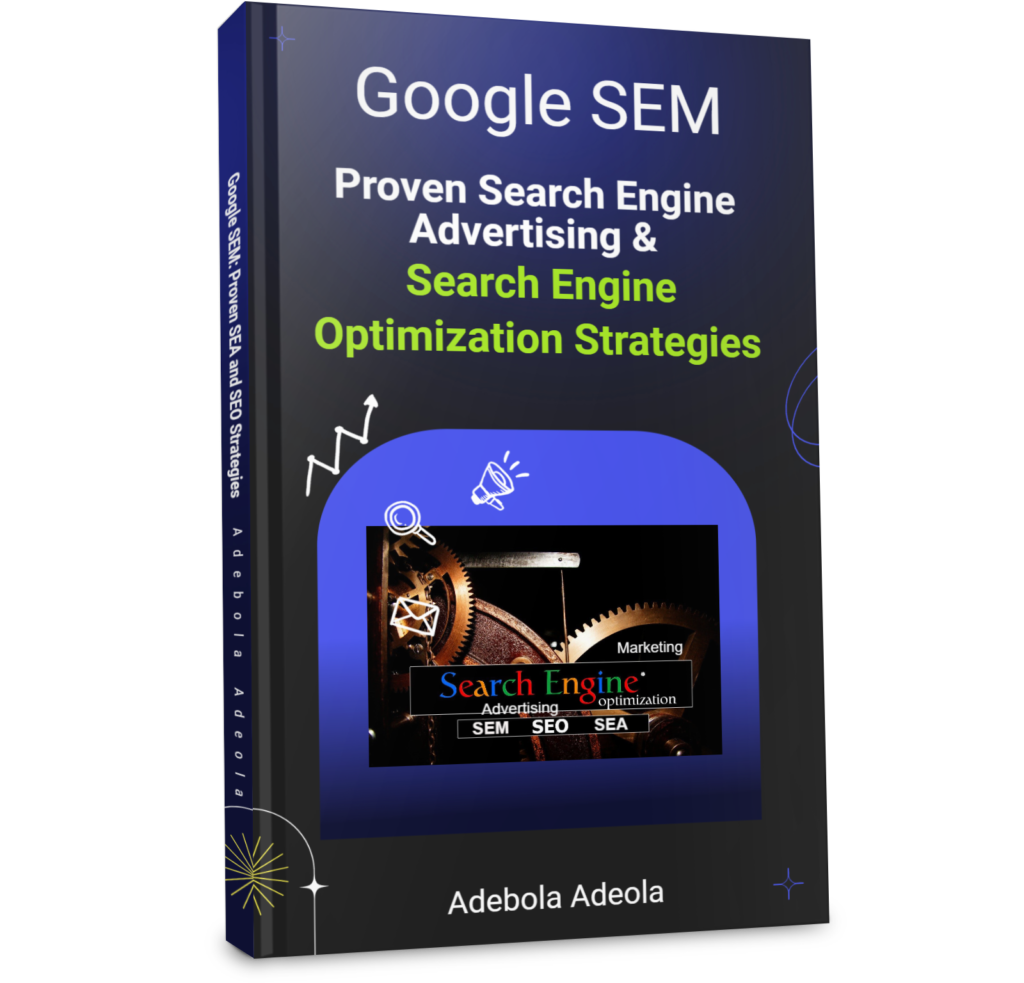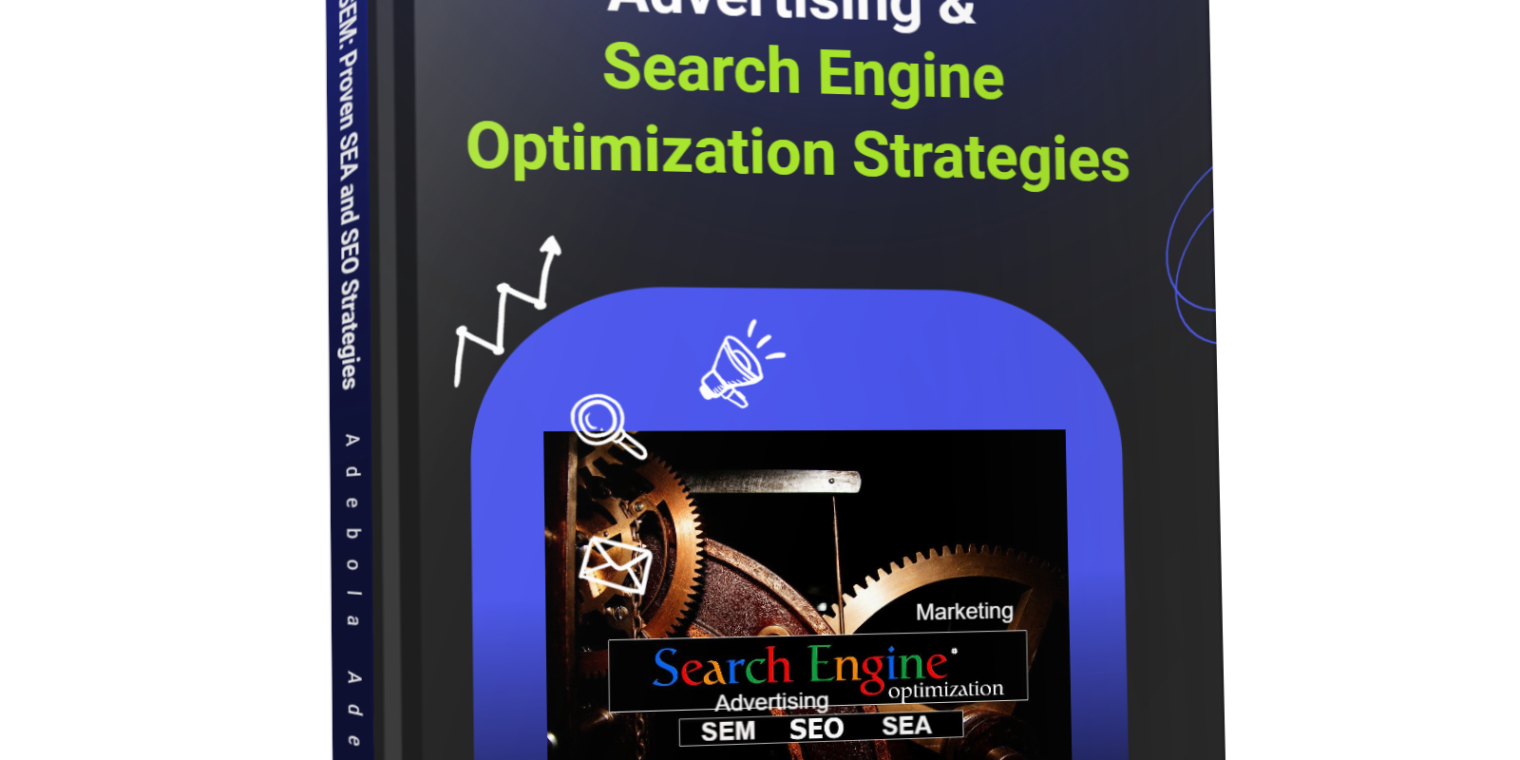Google SEM eBook: Proven SEA and SEO Strategies to Engage and Convert Your Audience
Unlock the potential of your online presence with Google SEM (Search Engine Marketing) eBook: Proven Search Engine Advertising and Search Engine Optimization Strategies to Engage and Convert Your Audience. This comprehensive guide is designed for businesses, marketers, and entrepreneurs eager to dominate search engine results and boost their bottom line.
Google SEM: What’s Inside?
- Search Engine Advertising (SEA) Mastery
- Learn how to craft compelling Google Ads campaigns.
- Optimize ad targeting for precision engagement.
- Manage budgets effectively to maximize ROI.
- Search Engine Optimization (SEO) Techniques
- Build an SEO foundation that ensures long-term visibility.
- Master keyword research to attract the right audience.
- Optimize your website for both users and search engines.
- Integration for Maximum Impact
- Discover the synergy between SEA and SEO.
- Learn how to balance paid and organic strategies for sustained growth.
- Analyze performance data to continuously improve your campaigns.
Google SEM: Why This eBook?
- Proven Strategies: Get actionable tips based on real-world results.
- Step-by-Step Guidance: Perfect for beginners and seasoned marketers alike.
- Engagement and Conversion Focus: Beyond traffic, learn how to turn visitors into loyal customers.

Google SEM: Benefits of Implementing These Strategies
- Drive targeted traffic to your website.
- Improve brand visibility on Google.
- Engage your audience with relevant and timely content.
- Achieve measurable results that impact your bottom line.
Start your journey to mastering Google SEM (Search Engine Marketing) today. Whether you are looking to outrank your competitors organically or dominate the paid search landscape, this eBook has the strategies you need to thrive in the digital world.
Google SEM: Comprehensive Glossary of Digital Marketing Terms
- Search Engine Marketing (SEM)
A digital marketing strategy that uses both paid advertising (SEA) and organic optimization (SEO) to increase a website’s visibility on search engine results pages (SERPs). - Search Engine Advertising (SEA)
A subset of SEM focuses solely on paid ads, such as Google Ads, to secure top positions on SERPs for targeted keywords. - Search Engine Optimization (SEO)
A strategy to optimize a website’s content, structure, and backlinks for better rankings in organic (non-paid) search engine results. - Pay-Per-Click (PPC)
An online advertising model where advertisers pay each time a user clicks their ad. PPC campaigns are common in SEA strategies. - Difficulty Score
A metric that gauges how competitive it is to rank for a specific keyword based on factors like competition and domain authority. - Search Intent
The underlying purpose behind a search query is seeking information (informational), finding a website (navigational), or making a purchase (transactional). - Search Trend
The pattern of interest or popularity for a particular keyword or topic over time is analyzed to forecast demand or market interest. - Search Volume
The average number of monthly searches for a specific keyword helps marketers assess its popularity. - Backlink
An inbound link from one website to another, which search engines use to measure credibility and authority in SEO. - Return on Ad Spend (ROAS)
A performance metric that measures the revenue generated for every dollar spent on advertising. Calculated as Revenue ÷ Ad Spend. - Cost-Per-Click (CPC)
The cost an advertiser pays for each click on their ad. CPC is a key metric in PPC campaigns. - Cost-Per-Mille (CPM)
The cost an advertiser pays per 1,000 ad impressions is typically used for brand awareness campaigns. - Cost Per Conversion
The total cost of generating a conversion (e.g., a sale, lead, or signup) through an ad campaign. - AdMob
Google’s mobile advertising platform allows developers to monetize their mobile apps using ads. - Ad Strength
A metric used to evaluate the effectiveness of an ad based on its content, relevance, and potential to engage users. - Ad Conversion
The completion of a desired action (e.g., purchase, sign-up, or download) by a user after interacting with an ad. - Cost-Per-View (CPV)
The cost advertisers pay for each view of a video ad, often used in platforms like YouTube. - Cost-Per-Acquisition (CPA)
The cost of acquiring a new customer or lead through advertising. CPA = Total Ad Spend ÷ Total Conversions. - Contextual Targeting
A targeting method where ads are placed based on the content of a webpage, ensuring relevance to the user. - Retargeting
A strategy that shows ads to users who have previously interacted with a website or app, aiming to re-engage and convert them. - Click-Through Rate (CTR)
The percentage of users who click on an ad after seeing it. CTR = (Clicks ÷ Impressions) × 100. - Impression
The number of times an ad is displayed to users, regardless of whether they interact with it. - Conversion Rate
The percentage of users who complete a desired action (e.g., purchase, sign-up) after interacting with an ad or website. - Quality Score
A Google Ads metric that evaluates the relevance and quality of your keywords, ads, and landing pages. - Landing Page Optimization (LPO)
The process of improving a landing page to increase conversions by enhancing user experience and relevance to the ad. - A/B Testing
A method of comparing two versions of an ad, email, or webpage to determine which performs better. - Geo-Targeting
The practice of delivering ads to users based on their geographic location. - Dayparting
Scheduling ads to appear at specific times of the day or days of the week to target audiences effectively. - Lookalike Audience
A group of users with characteristics similar to those of an existing audience was created using platforms like Facebook Ads to expand reach. - Negative Keywords
Keywords that prevent ads from being displayed for irrelevant searches improve campaign efficiency. - Remarketing Lists for Search Ads (RLSA)
A feature that allows advertisers to customize search ad campaigns for users who have previously visited their website. - Programmatic Advertising
Automated ad buying using algorithms and data insights to place ads in real time on digital platforms. - View-Through Conversion
A metric that tracks conversions resulting from users who saw, but didn’t click an ad, and later completed a conversion action. - Call-to-Action (CTA)
Prompt encouraging users to take a specific action, such as “Buy Now,” “Download,” or “Sign Up.” - Attribution Modeling
Analyzing and assigning credit to various marketing channels that contribute to a conversion, helping optimize spending.
Ready to boost your online success? Download the Google SEM eBook now and unlock proven SEA and SEO strategies to drive traffic, engage audiences, and convert leads!
For further information concerning Google SEM, contact us now.
Published on 16th December 2024 by Adebola Adeola, CEO of Dinet Comms, Lagos, Nigeria

